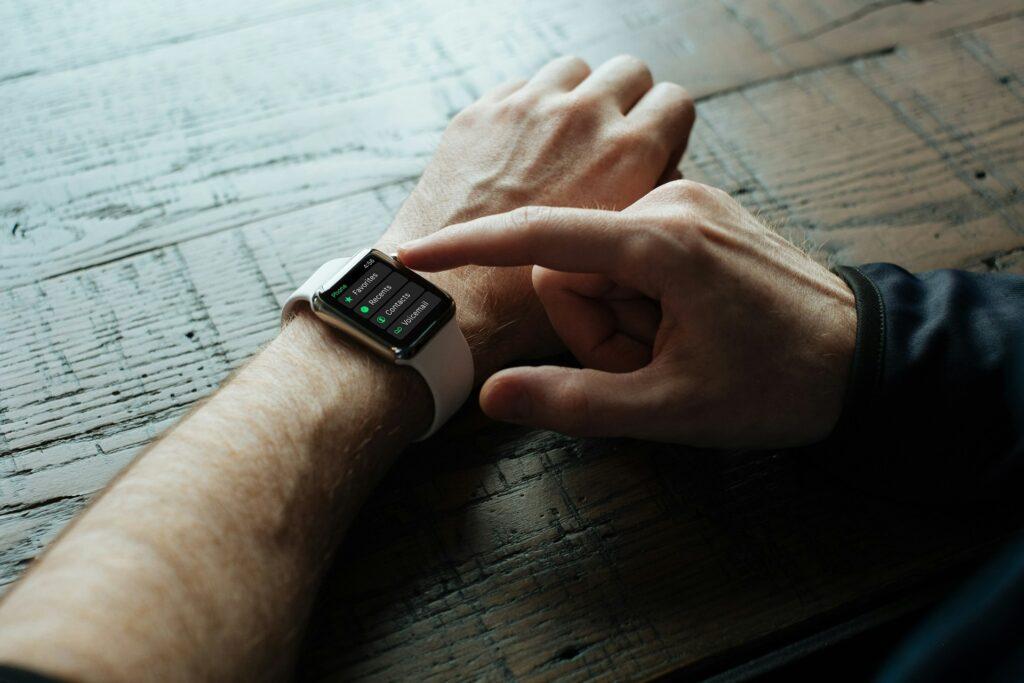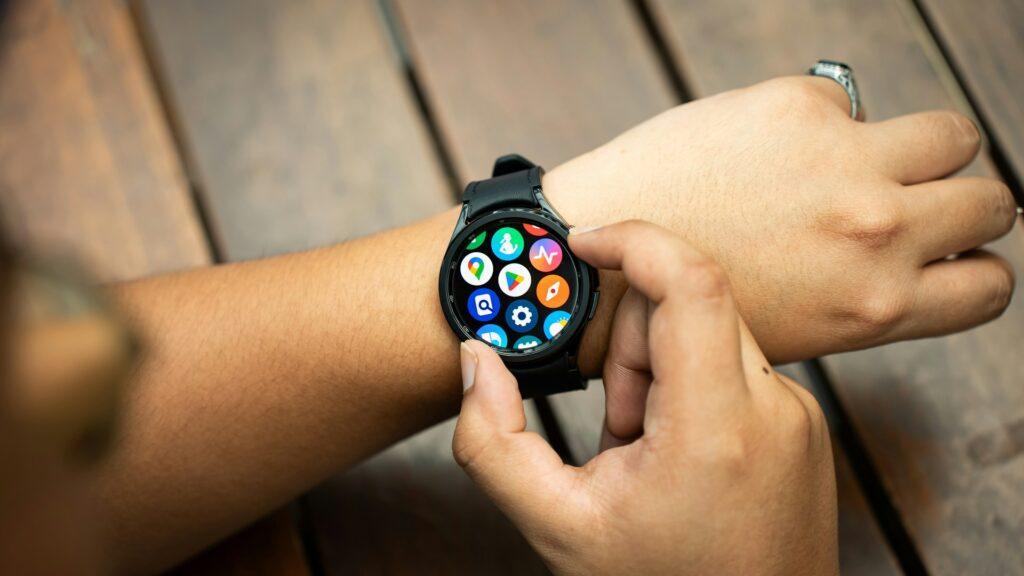Smartwatch Security and Privacy: Keeping Your Data Safe
In today’s tech-savvy world, smartwatches have become increasingly popular, offering a convenient way to stay connected, track fitness activities, and access a wide range of features right from your wrist. However, as these devices become more advanced and collect more personal data, concerns surrounding privacy and security have also risen.
From sensitive health information to location data and communication logs, smartwatches can store a wealth of valuable and potentially sensitive information. Failing to take proper precautions can put this data at risk, leaving you vulnerable to identity theft, financial fraud, stalking, or other malicious activities.
The consequences of a data breach can be severe, with the average cost of a data breach reaching a staggering $4.45 million in 2023, according to IBM’s Cost of a Data Breach Report. It’s crucial to be proactive in protecting your personal information and maintaining control over your data. This comprehensive guide will empower you with the knowledge and best practices necessary to keep your smartwatch secure and your privacy intact.
Contents
Understanding Smartwatch Data and Potential Risks
Smartwatches are designed to collect and process various data to enhance user experience and provide valuable insights. Some of the most common types of data collected include:
1. Health and Fitness Data:
Many smartwatches are equipped with sensors that track your heart rate, steps taken, calories burned, and sleep patterns. This data can be incredibly useful for monitoring your overall health and fitness goals.
2. Location Data
Smartwatches often utilize GPS or other location services to track your movements, provide navigation assistance, and enable location-based features.
3. Communication Logs
Depending on the smartwatch model and connected services, your device may store call logs, text messages, and other communication data.

4. Personal Information
Some smartwatches store personal details such as your name, contact information, and calendar events. A data breach involving this type of information can facilitate phishing attacks or other forms of social engineering, as demonstrated by the 2021 T-Mobile data breach that exposed the personal data of over 50 million individuals.
While this data can be incredibly useful, it also represents a potential risk if it falls into the wrong hands. Data breaches or unauthorized access to your smartwatch could lead to serious consequences, including identity theft, financial fraud, stalking, or other forms of harassment or exploitation.
Secure Your Smartwatch: Essential Security Measures
To protect your data and maintain the security of your smartwatch, it’s essential to implement the following security measures:
1. Set a Strong Passcode or Pattern Lock
Most smartwatches allow you to set a passcode, pattern, or biometric authentication (like a fingerprint or facial recognition) to unlock the device. Choose a strong, unique passcode that cannot be easily guessed, and enable this feature to prevent unauthorized access.
2. Enable Automatic Watch Locking and Remote Wipe Features
Many smartwatches offer an automatic lock feature that secures the device after a period of inactivity. Additionally, remote wipe capabilities allow you to erase all data from your smartwatch if it is lost or stolen, preventing others from accessing your personal information.
3. Keep Your Smartwatch Software Up-to-Date
Manufacturers regularly release software updates that address security vulnerabilities and improve overall performance. Make sure to install these updates promptly to benefit from the latest security patches and enhancements.
4. Use Reputable Apps from Official App Stores
Be cautious when downloading and installing third-party apps on your smartwatch. Stick to official app stores and reputable developers to minimize the risk of installing malware or potentially harmful applications.

Manage Privacy Settings on Your Smartwatch
In addition to implementing security measures, it’s essential to review and adjust your smartwatch’s privacy settings to ensure that your data is shared only with authorized parties and for intended purposes. Here are some key privacy settings to consider:
1. Adjust App Permissions
Most smartwatch operating systems allow you to control the permissions granted to individual apps. Review these permissions and disable access to sensitive data like location, contacts, or health information for apps that don’t require such access.
2. Disable Unnecessary Sensors and Data Collection Features
Some smartwatches offer advanced sensors and data collection capabilities that may not be necessary for your needs. Disable any unnecessary features to minimize the amount of data collected and potential privacy risks.
3. Control Data Sharing with Third-Party Services
Many smartwatch apps and services may request access to your data for purposes such as personalization or targeted advertising. Review these requests carefully and opt out of data sharing if you’re uncomfortable with how your information may be used.
4. Enable or Disable Cloud Backups
Some smartwatches offer the ability to back up your data to the cloud for easier restoration or synchronization across devices. While convenient, this feature can also introduce privacy risks if the cloud service is compromised. Consider disabling cloud backups or using a secure, encrypted backup solution if data privacy is a top concern.
Best Practices for Smartwatch Security and Privacy
In addition to implementing security measures and managing privacy settings, adopting the following best practices can further enhance the protection of your data and personal information:
1. Be Cautious with Public Wi-Fi Networks
Avoid connecting your smartwatch to unsecured public Wi-Fi networks, as these can be prime targets for hackers seeking to intercept data transmissions. If you must use public Wi-Fi, consider using a virtual private network (VPN) to encrypt your internet traffic.
2. Safeguard Your Smartwatch from Loss or Theft
Treat your smartwatch like any other valuable possession. Keep it secure and out of sight when not in use, and consider enabling features like remote tracking or device locking to protect your data in case of loss or theft.
3. Regularly Review and Manage Connected Apps and Services
Periodically review the apps and services connected to your smartwatch, and revoke access for any that you no longer use or trust. This helps minimize potential privacy risks and reduces the attack surface for malicious actors.

4. Be Mindful of Sensitive Information Displayed on Your Smartwatch
While smartwatches offer convenient access to information, be cautious about displaying sensitive data, such as financial details or personal messages, on your wrist in public settings where others may be able to view it.
Additional Tips and Recommendations
1. Use a Dedicated Smartwatch Security App (if available)
Some smartwatch manufacturers or third-party developers offer security apps specifically designed to enhance the privacy and security of your device. Consider installing and using these apps for an added layer of protection.
2. Enable Two-Factor Authentication for Connected Accounts
Many online accounts and services now offer two-factor authentication (2FA) as an additional security measure. Enable 2FA for any accounts connected to your smartwatch to prevent unauthorized access, even if your login credentials are compromised.
3. Regularly Back Up and Reset Your Smartwatch
Periodically backing up your smartwatch data can help you recover important information in case of data loss or device failure. Additionally, consider resetting your smartwatch to its factory settings before selling, donating, or recycling it to ensure all personal data is securely wiped.
4. Be Vigilant About Phishing Attempts or Suspicious Activities
Cybercriminals may attempt to gain access to your personal information through phishing scams, malware, or other social engineering tactics. Stay vigilant, and report any suspicious activities or unauthorized access attempts to the appropriate authorities or service providers.
Conclusion:
In the age of connected devices and ever-increasing data collection, maintaining the security and privacy of your smartwatch is paramount. By implementing the essential security measures, managing privacy settings, and adopting best practices outlined in this guide, you can take proactive steps to safeguard your personal information and enjoy the benefits of your smartwatch without compromising your privacy.
Remember, staying informed about the latest security updates, privacy concerns, and best practices is crucial. Regularly review and adjust your security and privacy settings as needed, and be vigilant about potential threats or suspicious activities.
By prioritizing the protection of your data, you can confidently embrace the convenience and functionality of your smartwatch while minimizing the risks associated with data breaches or unauthorized access.
FAQs
Smartwatches can be safe if proper security measures are taken. However, they collect sensitive data like health information and location details, which could pose privacy risks if the device is compromised or data is mishandled. Taking proactive steps to secure your smartwatch and manage privacy settings is crucial for safeguarding your personal data.
Common types of data collected by smartwatches include health and fitness data (heart rate, steps, calories burned, sleep patterns), location data, communication logs (call logs, text messages), and personal information (name, contact details, calendar events).
Most smartwatches allow you to set a passcode, pattern, or biometric authentication (fingerprint, facial recognition) to unlock the device. Choose a strong, unique passcode that cannot be easily guessed, and enable this feature to prevent unauthorized access.
Most smartwatch operating systems allow you to control the permissions granted to individual apps. Review these permissions and disable access to sensitive data like location, contacts, or health information for apps that don’t require such access.
Stay vigilant and report any suspicious activities or unauthorized access attempts to the appropriate authorities or service providers. Avoid clicking on suspicious links or providing personal information to untrusted sources.
Manufacturers regularly release software updates that address security vulnerabilities and improve overall performance. Make sure to install these updates promptly to benefit from the latest security patches and enhancements.
Before selling, donating, or recycling your smartwatch, consider resetting it to its factory settings to ensure all personal data is securely wiped.